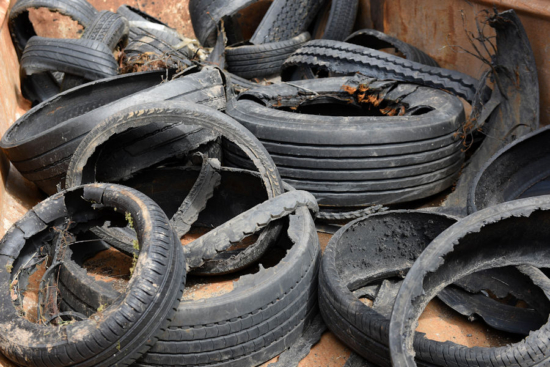Bridgestone Fleet Debris Study: Consign yard-based tyre damage to the scrapheap
 Depots that didn’t use a road sweeper had the highest number of debris collected (Photo: Bridgestone)
Depots that didn’t use a road sweeper had the highest number of debris collected (Photo: Bridgestone)
Anyone who abhors saving money or road safety should read no further, for Bridgestone is certain that “thousands of costly punctures on motorways across England can be prevented in a matter of minutes.” The key to achieving this speedy, safety-related saving is, according to a Bridgestone study, regularly inspecting commercial fleet yards for bolts, nails and screws.
The mobility solutions provider has revealed the results of a two-year study into debris-related punctures across five of its biggest fleet customers in England. Utilising overhead satellite heat maps and painstaking daily checks, Bridgestone discovered 504 items of debris across the five sites, 200 of which were ‘medium to high risk’ hazards and were the potential sources of puncture-related tyre removals thereafter.
Bridgestone’s Fleet Debris Study is the first of its kind ever compiled and the company sees it as reinforcement of its “status as a leader in data-driven insight and support.” It represents the follow-up piece of research after the Bridgestone 2018 Tyre Debris Study Report.
Magnetic sweepers & checks vital
The presence of 102 high-risk and 98 medium-risk items of debris in this research validates the findings of the 2018 report, which found that 56 per cent of the tyres analysed had failed due to road hazards including penetrations due to sharp objects. In light of this latest research, Bridgestone is urging commercial fleets to utilise magnetic road sweepers, driver walk-around checks and daily visual inspections of their yards to significantly reduce the risk of costly punctures.
Tellingly, the depots that didn’t use a road sweeper as part of their housekeeping practices had the highest number of debris collected.
The highest quantity of debris accumulated across the five fleets were in the vehicle washing areas, which could be the result of parts becoming dislodged during the vehicle washing process. Considerable debris was also found in loading and unloading bays, which Bridgestone believes could be the result of drivers sweeping debris off their vehicles.
All ambiguity removed
Bridgestone’s North Region technical manager Gary Powell headed-up the Fleet Debris Study and hoped the findings would prompt commercial fleets to implement some simple inspection measures to keep their drivers safe and make significant savings – both in terms of expense and time.
“We’re extremely proud of this study, as it gives the biggest insight yet into the risks that are present on forecourts every single day,” says Powell. “The aim was to determine the amount of debris present in fleet depots and to ascertain the risk and we believe we have a body of work that removes any ambiguity when it comes to commercial fleet yard management.
“Higher amounts of debris collected at some of the depots inspected could be attributed to the lack of good housekeeping and tyre husbandry practices. It was noted that depots which employed a road-sweeper, were successful at significantly reducing the amount of debris and specifically High-Risk debris items like bolts and nails.”
Puncture prevention starts in yard
Figures for 2021 released by the Department of Transport show 1,759 personal injury collisions in the UK, of which 491 were because of defective or illegal tyres. The Reported Road Casualties GB report also reveals that 21 people died as a result of being involved in incidents where vehicle defects were identified as contributing factors. In total, 418 people were killed or seriously injured because of incidents where vehicle defects were identified. Of those, 111 were due to tyres alone.
Mark Cartwright, head of Commercial Vehicle Incident Prevention at National Highways states: “Just as charity starts at home, then puncture prevention also clearly starts at the yard. This report is so valuable in drawing the attention of truck and van operators and owners to their responsibilities in ensuring they aren’t damaging their tyres before joining our roads. We would strongly encourage operators to ensure their tyre damage isn’t self-inflicted.”


Comments